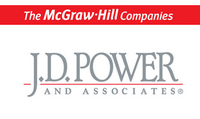J.D. Power and Associates Reports: Auto Insurance Claims Satisfaction Increases as Claimants Are Being Paid Faster
 |
Length of Time Vehicles Are in a Repair Shop Increases, Extending the Claims Process
WESTLAKE VILLAGE, CA--Jan. 24, 2013: As repairable and total loss claims are being paid faster, overall claimant satisfaction with the auto insurance claims process increases in the fourth quarter of 2012, compared with the fourth quarter of 2011, according to the J.D. Power and Associates 2013 U.S. Auto Claims Satisfaction StudySM--Wave 1 released today.
The study measures claimant satisfaction with the claims experience for auto physical damage loss. Depending on the complexity of the claim, a claimant may experience some or all of the following, which are measured in the study: first notice of loss; claim service interaction; damage appraisal; repair process; rental experience; and settlement.
Overall, claimant satisfaction with the auto claims process in the fourth quarter of 2012 has increased by six points to 861 (on a 1,000-point scale) from the fourth quarter of 2011, primarily due to an 11-point increase in settlement satisfaction. Contributing to the improvement in settlement satisfaction are slight increases in the ratings of two attributes in this factor: fairness of the claim settlement and timing of the settlement.
The study finds that the average time to pay claimants has decreased to 13.9 days in the fourth quarter of 2012, down from 16.4 days in the same period of 2011. While the average time to pay claimants for a repairable claim (11.8 days) has decreased by 1.3 days from the fourth quarter of 2011, the largest decrease is in the time it takes to pay total-loss claims, down by an average of 5.1 days to 18.5 days.
"Regardless of the claim type, the faster the claimant is paid and can move forward with a repair or to replace their vehicle, the more likely they are to be satisfied," said Jeremy Bowler, senior director of the insurance practice at J.D. Power and Associates. "In addition, satisfaction with the claims professional is at an all-time high, indicating that the process is becoming smoother, with more frequent updates throughout contributing to a much more satisfying experience."
Interestingly, while overall claim satisfaction increases and the time it takes to pay claimants decreases, the average cycle time of the vehicle repair increases by 1.2 days to 13.5 days in the fourth quarter of 2012, compared with 12.3 days in the fourth quarter of 2011.
Satisfaction with the repair process is 862, a decrease of two points from the fourth quarter of 2011. Contributing to lower satisfaction is a decline in the percentage of vehicles being fixed right the first timeā€”89 percent in the fourth quarter of 2012, compared with 91 percent in the fourth quarter of 2011.
"While insurers have made significant progress in the past 12 months to improve the efficiency of the claims process, the repair providers have not kept pace," said Bowler. "Failure to repair a vehicle correctly is critical to the customer experience as average satisfaction scores tumble over one hundred points for those who had to bring their vehicle back for repeat repairs."
On average, claimants who take their vehicle to a non-direct repair provider wait 16.0 days to get their vehicle back, 2.9 days longer than when they take their vehicle to a direct repair provider (13.1 days, on average). The gap in time between a direct repair provider and non-direct repair provider in the fourth quarter of 2012 has increased from only 1.8 days in the same period in 2011.
The 2013 U.S. Auto Claims Satisfaction Study--Wave 1 is based on responses from more than 3,000 auto insurance customers who settled a claim within the past 6 months. The study excludes claimants whose vehicle incurred only glass/windshield damage or was stolen, or who only filed roadside assistance claims. Survey data for Wave 1 of the study was gathered in December 2012.


